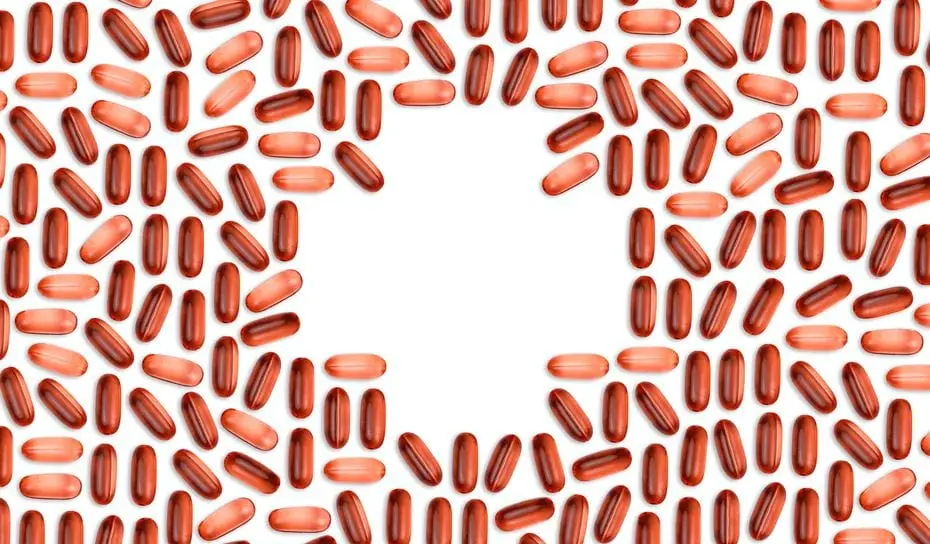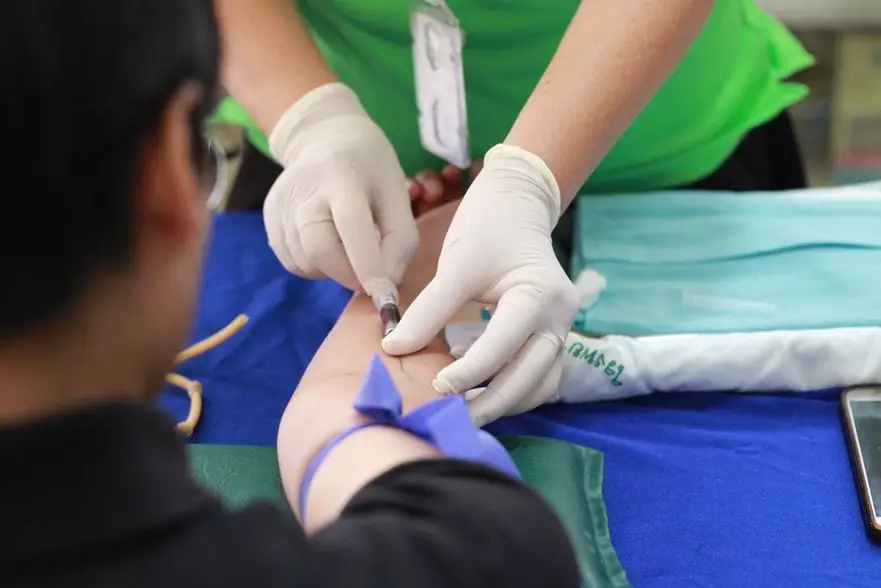Why is iron important?
Iron is used to make haemoglobin – the main part of our red blood cells that carries oxygen around our bodies. It is also important for muscle strength, energy, concentration and good mental function.
If your iron levels are low this may make you feel tired and not able to do your normal daily activities.
As the amount of iron in the body falls even lower, the haemoglobin level drops below normal. This is known as ‘iron deficiency anaemia’. Symptoms of iron-deficiency anaemia observed frequently in general practice include chronic fatigue, headache, dizziness, breathlessness, and palpitations and reduced cognitive function. Irondeficiency anaemia may reduce the patient’s health-related quality of life, physical performance and ability to work, and increase morbidity and mortality.

What is iron infusion?
Intravenous or IV means giving something directly into the blood stream of the body through a vein. A cannula placed into a vein (usually in the back of the hand or arm) is attached to a drip that contains iron. This fluid is slowly infused into the vein and mixes with the blood in your body.
Iron infusions are usually prescribed by doctors to treat iron deficiency anemia. Iron deficiency anemia is typically treated with dietary changes and iron supplements that you take in pill form. In some cases, though, doctors may recommend iron infusions instead.
You may require an IV infusion if you are
- Unable to take iron tablets or liquid
- Not responding to iron tablets or not absorbing them
- Needing to get your iron levels up urgently (e.g. before major surgery, late in pregnancy or to avoid blood transfusion)
- Experiencing chronic kidney disease or chronic heart failure
- Experiencing continuous blood loss
Contradictions
Iron infusion may not be suitable for patients in some conditions. Please talk to your doctor if you fall into any of the categories below
- Pregnancy in the 1st trimester
- Dialysis
- Allergy or Sensitivity to Ferric Carboxymaltose
- Iron overload or Haemochromotis
- Under the age of 14 years
- Non-iron deficiency related anaemia
- Suffering from fever/sepsis

Book Your Infusion Now
Unlock the Power of Infusions! Discover our exceptional infusion services at Shire Doctors & Dentists.
Complete a few details below to book an immediate appointment at our clinic.
How to Prepare for an Iron Infusion
Your doctor will provide specific instructions for preparing for your first iron infusion treatment. Some basic things you can do to prepare on the day of your infusion include
- There is no need to fast for an iron infusion, please eat your breakfast or lunch prior to your appointment
- Take your regular medications
- Please talk to your doctor about the procedure first if you feel nervous about the iron infusion. Your doctor can recommend ways to help you stay comfortable and relaxed during the procedure.


Tips for comfort
- Wear comfortable, loose-fitting clothing.
- Have drinking water available.
- Listen to your favourite music on your smartphone.
- Watch a film or TV show on a tablet or smartphone.
- Bring your favourite book or magazine.
What happens during an iron infusion?
Our experienced emergency medicine specialist doctor would insert the intravenous cannula usually into a vein in your arm or hand. Then, he will remove the needle, leaving the catheter in your vein.
The catheter is attached to a long tube, which is connected to an IV bag of the iron. The iron has been diluted with a saline solution to minimise the side effect of iron infusion. This solution is either pumped into your vein or uses gravity to slowly drip down the tube and into your vein.
The doctor performing the procedure will start the infusion slowly first to ensure you don’t have any adverse reactions from the iron. If you do, they will stop the procedure and our emergency physician will look after you.
How long does an iron infusion take?
An iron infusion can take up to one hours. In some cases, the infusion may take a little longer, depending on the level of treatment your doctor thinks you need or your heart condition. The slow infusion rate helps prevent complications.
It often takes several iron infusions to bring the body’s iron levels up to the appropriate levels. You will receive iron infusions over the course of one or two months for your treatments. Iron infusions take time and can be more expensive than other types of anemia treatments.
Side effects and complications on iron infusion
After the infusion, you can return to your normal activities straight away. Most people are able to drive themselves home. You can even go back to work after your infusion if you feel up to it.
You may have some side effects right after the procedure;
Mild side effects
- Temporary changes in the way you taste food and drinks
- Mild headaches
- Nausea and vomiting
- Muscle and joint pain
- Shortness of breath
- Itchiness and rash
- Increased or decreased blood pressure or heart rate
- Burning sensation or swelling at the site of the injection

Serious side effects
A rare but serious complication from iron infusions is iron toxicity. The symptoms of iron toxicity may come on quickly, which can cause anaphylactic shock. Or they may come on slowly over time. Iron toxicity that develops over time leads to too much iron in the body’s tissues.
The test dose and the slow infusion rate are both done to prevent this complication. The test dose is also important if you have a history of multiple drug allergies. Your doctor will use the test dose to monitor you for any reactions.
These reactions can include:
- Anaphylaxis
- Shock and severe hypotension (low blood pressure)
- Collapse
Iron infusions during pregnancy
A pregnant woman’s need for iron increases throuout the pregnancy as her fetus develops. As the fetus absorbs iron from her body, the mother’s iron levels may drop, resulting in anemia. For that reason, doctors sometimes order iron infusions for pregnant women.
Infusions are often preferred over oral iron supplements because taking it by mouth can cause gastrointestinal side effects and constipation. However, iron infusions are usually reserved for the second or third trimester of pregnancy. It’s not yet known if it is safe to administer iron infusions during the first trimester.
Iron infusion benefits
An iron infusion is a way to increase the body’s iron levels quickly. It’s a more immediate treatment than supplements or dietary changes. This can be very helpful in situations where anaemia is severe.
The physical benefits of an iron infusion include increased energy and easier breathing. You should start feeling these benefits a few weeks after your final infusion treatment. How long these benefits last depend on the cause of your iron deficiency anaemia and whether or not you’re using any other therapies to increase your iron levels.
For example, regular blood loss, such as through menstruation, may lead to a chronic drop in iron levels. Depending on your situation, the benefits of an iron infusion may last anywhere from several months to a few years.
Your doctor may recommend additional iron-increasing therapies, such as supplementation and dietary changes, which can prolong the benefits.
To book your appointment for our iron infusion clinic, please call 02 9063 8650
Fee (excluding consumable): $150

